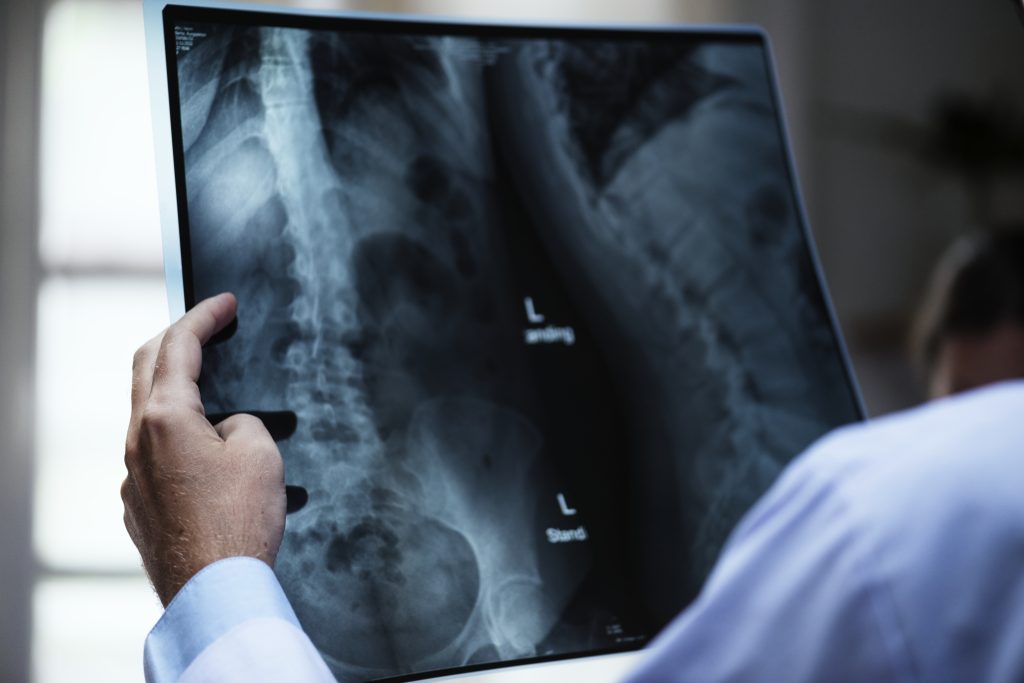Spondylolisthesis: Symptoms, Diagnosis, Types.
Spondylolisthesis is a spinal issue that leads to pain in the lower back. It happens when one of the bones in the spine, known as a vertebra, moves out of position and slips onto the vertebra below it. Usually, nonsurgical methods can help alleviate the symptoms. However, if the spondylolisthesis is severe, surgery is usually effective.

Symptoms of spondylolisthesis
The symptoms of spondylolisthesis differ. Individuals with mild instances may not experience any symptoms, while those with severe instances may find it difficult to engage in everyday tasks. Some of the typical symptoms include:
- persistent lower back pain
- stiffness in your back and legs
- lower back tenderness
- thigh pain
- tight hamstring and buttock muscles
Spondylolisthesis Diagnosis
If your physician suspects that you may have spondylolisthesis, they will inquire about your symptoms and conduct imaging examinations to determine if a vertebra is misaligned. These imaging tests could encompass:
- X-ray
- CT scan
- MRI scan
The severity of your spondylolisthesis may be evaluated by your doctor and graded accordingly. A low-grade (I or II) is considered less severe and typically does not require surgery. On the other hand, a high-grade (III and IV) is more severe and surgery may be necessary, especially if you experience significant pain.
Types of spondylolisthesis

- Degenerative spondylolisthesis, which is the prevalent form, occurs as a result of getting older. As time passes, the fluid in the disks that provide cushioning between the vertebrae decreases. Consequently, the diminishing disks become more prone to shifting out of their proper position.
- Isthmic spondylolisthesis results from a defect in the pars interarticularis, which can be referred to as a pars fracture or spondylolysis. When the crack in the pars fracture affects both sides of the connection between the lamina and pedicles, it causes the vertebrae to slide out of their normal position.
- The condition of congenital spondylolisthesis arises when a person’s spine doesn’t develop correctly before they are born. This malformation of the vertebrae increases the likelihood of experiencing slippage as they grow older.
- Traumatic spondylolisthesis occurs when a spinal injury causes the vertebrae to become misaligned.
- Pathologic spondylolisthesis is the result of a different bone condition, like a tumor in the spine or osteoporosis.
- Iatrogenic (resulting from medical treatment) spondylolisthesis refers to the condition where the spine becomes unstable due to a previous surgery that involved decompressing it without using any supportive devices.
Will I need surgery for spondylolisthesis?

If you have any health concerns, your healthcare provider will initially suggest non-surgical approaches such as resting and undergoing physical therapy. These methods usually alleviate symptoms. However, if your healthcare provider deems it necessary, they might advise undergoing surgery.
- Have high-grade spondylolisthesis.
- Experience severe pain.
- Have attempted alternative treatments without success in alleviating symptoms.
Nonsurgical Treatment
Nonsurgical treatment typically leads to improvement in back pain and other symptoms for the majority of patients with spondylolysis and low-grade spondylolisthesis.
Nonsurgical treatment may include:
- Refraining from engaging in sports and other strenuous activities that put a lot of pressure on the lower back can often be beneficial for alleviating back pain and other related symptoms.
- Nonsteroidal anti-inflammatory drugs (NSAIDs) such as ibuprofen and naproxen have the ability to decrease inflammation, thereby alleviating back pain and reducing swelling.
- Steroid medications are administered through injections directly into the affected area.
- Physical therapy involves performing targeted exercises that can enhance flexibility, elongate tight hamstring muscles, and fortify the muscles located in the back and abdomen.
- Stabilizing your spine using a brace can be beneficial by restricting movement and promoting the healing process of fractures. However, it is worth noting that braces are typically not employed for adults.
Throughout the treatment, the doctor will periodically use X-rays to assess any changes in the position of the vertebra in your child.
What happens during surgery for spondylolisthesis?
Surgery is commonly used to treat back pain caused by spondylolisthesis, and it usually involves spinal decompression combined with fusion. In cases of isthmic spondylolisthesis, decompression alone is rarely performed. Research indicates that fusion with decompression may lead to better results compared to decompression alone. In a decompression surgery, the surgeon removes bone and disk from the spine, which creates more room for the nerves inside the spinal canal and helps to alleviate pain.
In a fusion surgery, the surgeon joins together the two vertebrae that are affected. As the vertebrae heal, they become a single bone, which prevents any movement between them. After the surgery, you might have reduced spinal flexibility.
After treatment
Your healthcare professional may suggest specific exercises to improve the strength of your back and abdominal muscles, particularly for children. It is important to schedule regular checkups to enable your healthcare provider to identify any issues at an early stage.
If the degree of spondylolisthesis was more severe, the likelihood of it recurring increases. Individuals with a minor slip may not experience a return of the condition.
Outlook
If you suspect that you have symptoms of spondyloslisthesis, it is crucial to promptly consult your doctor. Taking early treatment measures can relieve the majority of symptoms associated with this condition. As stated in a publication in Neurosurgical Focus, the majority of individuals with spondylolisthesis benefit from conservative nonsurgical treatment.
Depending on the severity of your condition, your doctor will discuss the different choices that are available to you.
Treatment in Türkiye:
The medical staff of surgical teams, doctors, and consultants at REHABTÜRK can provide the best treatment options and free consultations, striving to stay up-to-date on the latest medical technologies and methods.
